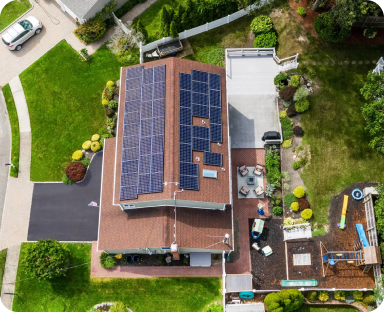The U.S. Environmental Protection Agency released some big news this week! On Monday, June 2nd, the EPA revealed the Clean Power Plan, which aims to reduce power plants’ carbon dioxide emissions to 30% less than their 2005 levels by 2030. While previous EPA legislation has focused on limiting toxic air pollutants such as mercury, arsenic, VOCs, and particulates, this is the first proposed policy to target carbon dioxide emissions from existing power plants.
This is an important differentiation, because the Clean Power Plan strives to not only improve air quality, but also reduce greenhouse gas emissions. Global climate change is already a costly problem for Americans’ health, safety, and economy. In 2012 alone, climate and weather disasters cost the American economy more than $100 billion. Since power plants account for about 30% of the United States’ greenhouse gas emissions, decreasing their emissions will have a major impact on our nation’s carbon footprint.
Critics of the Clean Power Plan argue that it oversteps the EPA’s jurisdiction and will result in price increases across the U.S. economy. Despite these concerns that reducing fossil fuel consumption will hurt the economy, it turns out that the clean energy industry is already undergoing dramatic economic growth. From January through March of 2014, 74% of all new power generation in the United States came from solar power. Now, the U.S. has 14.8 GW of installed solar capacity, which is enough to power 3 million homes. Homeowners, business, and utility companies are seeing that solar is a reliable source of power with predictable energy costs. And the more we can rely on renewables, the less we will need fossil-fuel-burning power plants.
Want to learn more about the Clean Power Plan? Here’s how it will work:
The EPA has calculated state-by-state goals using a universal formula. The goals look at states’ “pollution-to-power” ratio to determine a realistic objective that will meet energy needs while reducing carbon emissions.
The EPA has identified four key ways for states to reduce their emissions: 1) make existing coal-burning plants more efficient 2) optimize existing natural gas power plants 3) expand the use of wind, solar, and other renewable energy sources 4) increase existing buildings’ energy efficiency.
The EPA projects that the Plan will:
“Cut carbon emission from the power sector by 30 percent nationwide below 2005 levels, which is equal to the emissions from powering more than half the homes in the United States for one year;
Cut particle pollution, nitrogen oxides, and sulfur dioxide by more than 25 percent as a co-benefit;
Avoid up to 6,600 premature deaths, up to 150,000 asthma attacks in children, and up to 490,000 missed work or school days “providing up to $93 billion in climate and public health benefits; and Shrink electricity bills roughly 8 percent by increasing energy efficiency and reducing demand in the electricity system.”
The Clean Power Plan can improve our nation’s health, enhance our energy resilience, and protect our economy from fossil fuel price fluctuations. We look forward to seeing how the Clean Power Plan will be implemented!
Stop overpaying for electric. Go solar with $0 down.

Stop overpaying for electric. Go solar with $0 down.
About the Author
EmPower Solar develops, engineers, installs, and services solar and battery systems for residential and commercial clients. Since 2003, EmPower Solar has empowered thousands of New York homeowners and businesses with 47 megawatts of distributed solar. Its vision is to create a new energy paradigm powered by clean, renewable energy for a more prosperous, healthy, and civil world. The company culture is defined by the EmPowering Way, which results in consistent 5-star customer service reviews. For more information visit empower-solar.com.